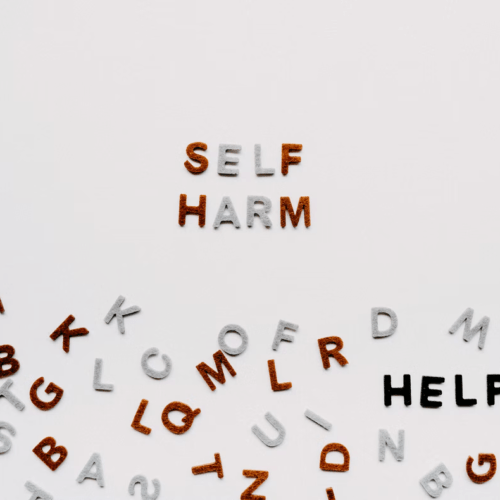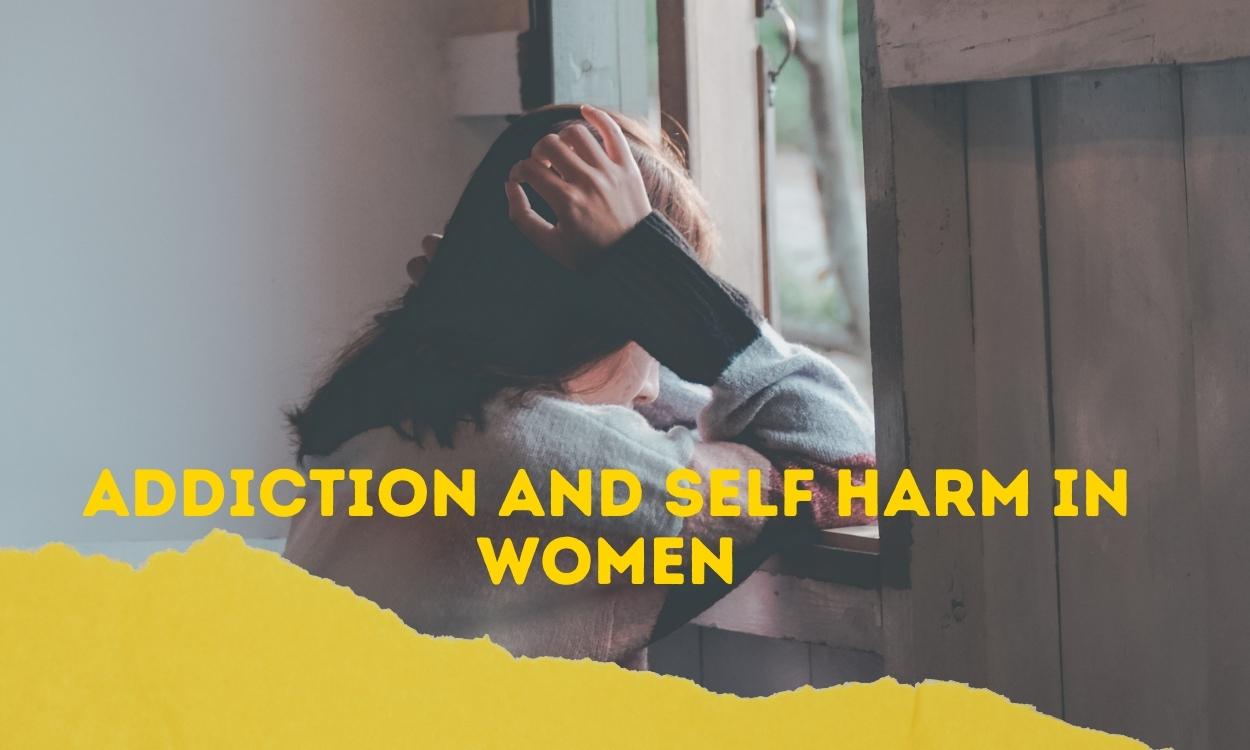There is often a relationship between addiction and self-harm behavior, particularly among women. Repetitive self-harming behaviors are more common than many people might initially realize.
Officially known as nonsuicidal self-injury or NSSI, if someone is struggling with co-occurring disorders of addiction and self-harm, their treatment program needs to treat both.
What is Self-Harming Behavior?
If you hurt yourself deliberately to deal with difficult feelings or emotions, trauma or painful memories or situations that are overwhelming, it’s self-harm or self-injurious behavior. While self-harm can reflect different things for different people, some describe these dangerous behaviors as:
- Escape trauma and difficult memories
- A way to express what they’re unable to put into words
- Shifting emotional issues and emotional pain into physical pain
- Emotional regulation or coping with overwhelming emotion
- Making their invisible feelings or thoughts visible
- Feeling in control of overwhelming emotions when they’re otherwise experiencing a loss of control
- Having something consistent in their lives
- Emotional release
- Punishing themselves for experiences or feelings
- Handling stressful events
- A way to stop feeling numb or dissociated
- Providing a reason for self-care
- Expressing suicidal ideation, thoughts, or feelings without taking their lives.
Cutting is one of the more common methods of hurting oneself. Some people will pick at wounds to keep them from healing, burn themselves or pull out their hair.
While hurting yourself is a coping mechanism. Unfortunately, it leads to increased emotional distress and health risks.
- If you hurt yourself intentionally, you might experience feelings of shame.
- If you drink or use substances while you hurt yourself, you could cause yourself a more severe injury than you intend.
- You’ll also likely find that your quality of life is impacted, as is your ability to function normally.
- You might withdraw from things you enjoy or avoid loved ones because you don’t want them to see your injuries.
Harming yourself isn’t in and of itself a mental illness. Instead, it’s a behavior that mental health professionals feel represents the need for more effective coping skills.
Unlike some other mental disorders, the DSM-5 doesn’t include specific diagnostic criteria for self-harm as a psychiatric disorder. It can be more of a symptom of something else as clinicians see it currently.
There are mental health conditions associated with this type of harm. Some of those include:
- Borderline personality disorder
- Eating disorders
- Substance abuse and addictive behaviors
- Anxiety
- Depression
- Posttraumatic stress disorder
While hurting oneself is most common during the teen and young adult years, it can occur anytime in someone’s life.
People most at risk include individuals with a history of trauma, abuse, or neglect.
If a person engages in harmful behaviors and drinks or uses drugs, they’re lowering their self-control, creating more risks.
Young females most often show behaviors indicative of NSSI, but it affects males too.
In some ways, hurting yourself can become a behavioral addiction similar to alcohol or drug addiction.
You may want to feel a release that the behavior elicits for you. You might develop a tolerance so that you hurt yourself more severely to feel more of a release over time, similar to substance addiction models.

The Connection with Trauma and Self-Harming Behavior
The majority of women with an addiction to drugs or alcohol have a history of trauma. Unfortunately, it’s difficult for them to recover without proper treatment or recognition of this trauma. Trauma-informed care is critical for treating self-harm disorders and addiction in young women.
When you have sadness, fear, or blocked anger because of difficult life situations, you have to experience your emotions safely.
You can’t overcome self-harm, which is a symptom of trauma, without finding other ways to deal with the hard emotions you have.
When someone experiences trauma or has post-traumatic stress disorder, it can create a deep mental and emotional wound. Trauma can be even more difficult for women than for men because people they know often perpetrate the events leading to it.
Women are more likely than men to blame themselves if they’re abused, leading to shame and self-loathing, which contribute to substance use disorders and hurting oneself.
Avoidance and denial don’t fix underlying problems. Women can fall into unhealthy coping mechanisms and try to self-medicate their symptoms.
All of these factors combine to make things worse, and addiction and harming yourself is progressive in many cases, meaning they get worse over time without treatment.
When women are self-medicating and are on the path to addiction, they progress more rapidly than men, often because of gender-specific challenges. Some of the issues that women face include:
- Stigma and shame
- Sexual and physical abuse
- Lack of childcare services and resources
- Lack of financial resources
- Unavailability of services
- More family responsibilities
Signs of Self-Injury and Self-Harming Behavior
Some of the symptoms of self-harming behavior include:
- Scars frequently occur in patterns
- Bruises, bite marks, cuts, or scratches
- Having sharp objects on hand
- Wearing long pants and sleeves even when the weather is warm or hot
- Frequently reporting accidental injuries
- Problems in relationships
- Seeming unpredictable or emotionally unstable
- Expressing feelings of worthlessness, hopelessness, or helplessness
Risk factors for self-injury include:
- Being female and especially a teen or young woman is a major risk factor
- Having friends who self-injure
- A history of traumatic or difficult experiences
- Social isolation
- Other mental health issues
- Influence of drugs or alcohol abuse
- Personal identity issues
Self-injury isn’t usually a suicide attempt and doesn’t inherently indicate suicidal intent, but it can increase the long-term risk of suicidal behavior. Longer-term patterns of someone hurting themselves when experiencing psychological pain or extreme depression can make suicide a higher risk.
Connections with Eating Disorders and Self-Harming Behavior
There are links between eating disorders and self-injury, also especially prevalent in young women.
Eating disorders include binge eating, anorexia nervosa and bulimia nervosa. Eating disorders rarely occur without other co-occurring conditions.
Someone with an eating disorder often may also engage in other self-destructive behaviors.
Treating Options for Co-Occurring Mental Health Disorders
If someone is experiencing self-injury and has a mental health disorder or a substance use disorder, they need treatment for both or dual diagnosis therapy. People with co-occurring disorders are more likely to be hospitalized than someone with just a substance use disorder without treatment.
An integrated treatment model is one with coordination between mental health care and substance use treatment.
Treatment programs for co-occurring disorders should aim to treat disorders’ emotional and physical aspects.
Integrated care leads to an improved quality of life and a higher likelihood of discontinued substance use. Integrated care can also improve psychiatric symptoms functionality in daily life and improve housing stability.
There isn’t a defined treatment for non-suicidal self-injury that’s widely studied, but instead, the goal is to recognize and treat underlying causes.
For substance use disorders and self-injury and harm, it’s important to learn healthy coping skills.
- During a treatment program, you can learn to maintain emotional balance and manage your difficult feelings, including loneliness, anger, and grief.
- Learning how to cope with negative emotions and overwhelming emotions is so important for recovery because these are inevitable things you’ll have to face in your life.
- Other treatment goals include improving self-esteem and self-image and developing skills for improving relationships and problem-solving.
- Impulse control may be part of the skills you learn too.
We rarely see that addictions to drugs or alcohol occur in a vacuum. There are very frequently other conditions that are happening simultaneously, like self-harm. Sometimes, people may struggle with multiple conditions.
Our goal is to provide effective, integrated, and holistic treatment to address all conditions and symptoms at our addiction treatment center. Please reach out to learn more about treatment options for alcohol and drug addictions and co-occurring mental health disorders.
Too often, people hide behind an outward smile, but you can change your life with treatment. To learn more about addiction treatment for women in Southern California, contact Anchored Tides Recovery at 866-600-7709.




























